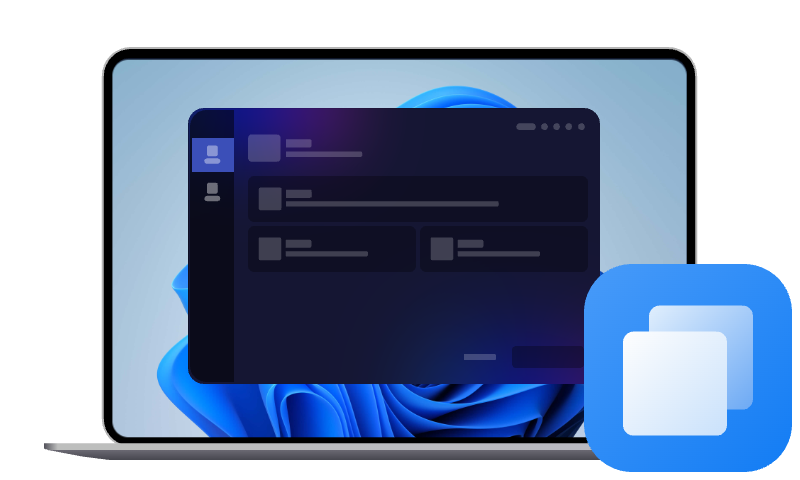(Fixed) Smart Hard Disk Detects Imminent Failure | 6 Ways
In fact, knowing more about “hard disk detects imminent failure”, there are 6 ways you can easily and quickly fix this error without losing data. Scroll down to explore more.
“When starting my computer I sometimes get a message that Hard Disk Failure Imminent. Please back up your hard disk and have it replaced. Press F10 for Setup. F2 to continue. The first time I got this screen it clicked on F2 and Windows opened and all seemed fine.
Now I have the same black screen with the same message but when clicking on F2, the computer does nothing. I have not back up my hard disk. What can I do to save this situation or am I just out of luck?”
- Question from Reddit
This error means the hard disk thinks it’s failing and should be replaced. Modern disk drives use S.M.A.R.T (Self-Monitoring, Analysis, and Reporting Technology) to try and detect imminent failure. It could be file system corruption, bad sectors, head misalignment, power surge, circuit or firmware issues, inadequate lubrication, a whole list of things.
You may hear clicking sounds, or the computer may always freeze, run slowly, etc., including HP laptops/desktops, Dell, Lenovo ThinkPads, and more, and receive one of the following error messages:
- Hard disk failure is imminent
- SMART failure predicted on hard disk 0
- Hard disk SMART status BAD – backup and replace
- 1720 smart hard drive detects imminent failure(always known HP smart disk imminent failure)
- Hard disk 1 (301) – imminent failure
Part 1: Check the Disk Status
Before attempting any fixes, you can choose to perform S.M.A.R.T. again and confirm the disk status.
Step 1. Type cmd in the search box and select Run as administrator.
Step 2. In the Command Prompt window, type wmic diskdrive get status and press Enter.
Usually, it will return "Status Pred Fail" or "Status OK". The previous option indicates that there are errors on your hard drive. The latter one, on the other hand, indicates that everything is alright. Note, you shouldn’t keep using a hard drive that detects imminent failure. This may cause more serious situations or data overwriting.
Part 2: Backup Your Data to Minimize Losses
As mentioned earlier, this error means your drive will fail soon, and you must not want to lose any important data (if yes). It’s advisable to backup your data before fixing the hard drive imminent failure.
- If your computer is bootable, you can directly backup files using File History, OneDrive, etc., to save a copy of your files.
- You can also choose to clone entire disk, including the operating system, installed programs, all data, etc., and replace hard drive without downtime.
- If it’s not bootable, connect it to another computer and try to access data on the disk.
Option 1: Backup Files using File History
File History is a free file backup software, first released in Windows 8, that can backup all the default and custom Libraries (including Public Folders), plus Contacts, Desktop, and Favorites folders to external hard drive or network drive.
Step 1. Connect your external hard drive to the computer. Click Start, type backup setting in the search box, and select it to access Back up using File History.
Step 2. Click Add a drive and select your external hard drive.
Step 3. Then, it will turn on the “Automatically back up my files” slide button and trigger an immediate backup.
Optionally, you can click “More options” to choose what to back up and start backup manually. By default, it will include all the user data and files and allows you to add or exclude specific folders according to your needs (if you are using Windows 10).
Option 2: Clone Hard Disk with Imminent Failure
If you end up replacing your hard drive, reinstalling Windows and programs is a time-consuming and tedious task, and certainly something you don't want (if at all possible). Then, how? There are many ways, of course, and the easiest way is to clone the entire hard disk and migrate all data to another drive.
AOMEI Cloner is a simple, powerful, and reliable cloning software that can clone hard drive or SSD in Windows 7, 8, 10, 11, and servers, even if it's failing. It will enable the intelligent clone feature to clone only the used sectors of a drive, making it easier to clone hard drive with imminent failure. You can also choose to clone OS only (if it’s smaller).

- Intelligent clone (default)- only clones the used sectors of a drive and skips the empty sectors and bad sectors.
- Bootable clone - clone HDDs/SSDs and MBR/GPT system disks without boot issues (even if smaller).
- SSD alignment - align partitions on SSDs to improve performance.
- Edit partitions - resize partition size on the destination disk, especially those with different disk partition styles (one MBR, one GPT).
- Disk compatibility - compatible with trusted brands and different interfaces, such as Samsung, WD, SanDisk, Crucial, NVMe, M.2, etc.
Step 1. Open AOMEI Cloner after installing, and click Clone > Disk Clone.
Step 2. You will be asked to select the source disk and destination disk (all data will be overwritten). Please be careful and click Next after each selection.
Step 3 (Important). Be sure to check the SSD Alignment feature to align SSD for better performance (if it is). Try the Edit Partitions feature for smooth cloning in the following two situations.
- The target SSD drive is larger. Select "Add unused space to all partitions or "Manually adjust partition size. The former is recommended as it is adjusted automatically without human intervention and minimizes errors.
- Both drives have different partition styles (one MBR, one GPT). Check the option "Convert the destination disk from MBR to GPT or vice versa to make them identical.
At last, click Start Clone to clone the hard drive with imminent failure.
By default, this software will enable the intelligent clone feature to clone only used sectors of a drive and skip the empty sectors and bad sectors, making it easier to clone hard drive with imminent failure. You can test if it’s bootable after cloning.
How to Fix "Hard Disk Detects Imminent Failure"
Now, it’s time to fix the “smart hard drive detects imminent failure” in 6 easy and effective methods. You don’t need to worry about data loss and the worst situation is to replace hard drive.
Fix 1: Check DiskErrors using CHKDSK
CHKDSK checks for and repairs logical file system errors and locates bad sectors to make your drive stable. Try it if you can still boot into Windows but are experiencing slow performance or corrupted files.
Step 1. Run CMD as an administrator.
Step 2. Type chkdsk C: /f /r and hit Enter. Type Y and reboot when prompted to schedule it at the next startup.
Fix 2: Scan the Drive in File Explorer
Microsoft also provides users with a CHKDSK GUI version that helps detect and repair basic drive errors. It’s worth trying a simple, point-and-click solution for beginners or non-technical users.
Step 1. Open File Explorer. Right-click on the hard drive and select Properties.
Step 2. Navigate to the Tools tab, and click Check to start disk checking.
Step 3. If it does not find any errors, click Scan Drive to attempt again. If available, click Repair Drive to repair found errors.
Fix 3. Clear the CMOS Battery (for Desktop)
CMOS battery's primary function is to enable CMOS (Complementary Metal-Oxide Semiconductor) to store data. Sometimes, it will falsely report disk errors due to cached data or corrupted settings. If so, you may keep seeing SMART errors or unexplained BIOS behavior.
Step 1. Shut down your computer completely. Press the Power button to turn it off and wait for a few minutes. You need to disconnect the power supply and power cord, even all the peripheral devices.
Step 2. Open the case to access the round CMOS battery, usually on the motherboard.
Step 3. Remove it gently from the connector and wait 5–10 minutes. If it’s connected using a wire, disconnect it from the onboard header.
Step 4. Reinstall the CMOS battery and restart to check if you still receive the imminent failure.
Fix 4. Update BIOS/UEFI Firmware
An outdated BIOS may misinterpret drive health or trigger false SMART warnings. Updating the firmware may solve the problem, especially for users with older computers or motherboards, or those with HP/Dell/Lenovo computer that frequently pushes firmware updates.
The easiest method is to check the latest BIOS/UEFI update from your PC/motherboard manufacturer’s support page. If available, download and install the firmware to remove the false SMART errors.
Fix 5. Format the Drive (If All Else Fails)
Formatting is the last resort- salvage a failed hard disk, but it can't repair the underlying physical damage. You can only use it for temporary storage and not for long-term use. Note that there is a risk of data loss if you continue using it.
Step 1. In File Explorer, right-click the failing drive and select Format.
Step 2. By default, it will check the Quick Format option, making data recovery possible. You can uncheck it for a full format. Be sure to select a compatible file system and click Start to format hard drive with imminent failure.
Fix 6. Replace Hard Drive (without Reinstalling Windows)
You can’t continue using it if it’s a system disk, as it may not be stable and cause errors at any time. If you still receive SMART warnings after attempting fixes or noticing ongoing performance issues or data loss, it’s time to replace hard drive.
If you don’t want to reinstall Windows and programs, the easiest method is to clone hard drive to new drive, preferably SSD drive with high performance, and then swap both drives. Please check Option 2 in Part 2 for cloning. Below are the steps to swap hard drives. Here, take laptops as an example (desktops are similar):
- Power off your laptop completely and remove the back panel to access the slot.
- Unscrew the screws securing the original drive or the slave slot. Please put them together for convenience.
- Gently remove the original drive and install the new drive in it, usually at a 30°or 45°angle. For the slave slot, please directly install the new SSD.
- Reinstall the back panel and try to boot from the new hard drive or SSD.
Closing Words
By following this how-to guide, you can easily fix the “hard disk detects imminent failure” without data loss, whether you are using HP or Dell, Lenovo, etc. Sometimes, it can be a false SMART warning, Please check the disk status first and backup your data (if necessary).
You can choose to backup data with File History or clone the entire disk and migrate all data to another drive, including the operating system, installed programs, personal data, etc. Note that the latter will take more time but will minimize subsequent troubles. AOMEI Cloner is highly recommended.

